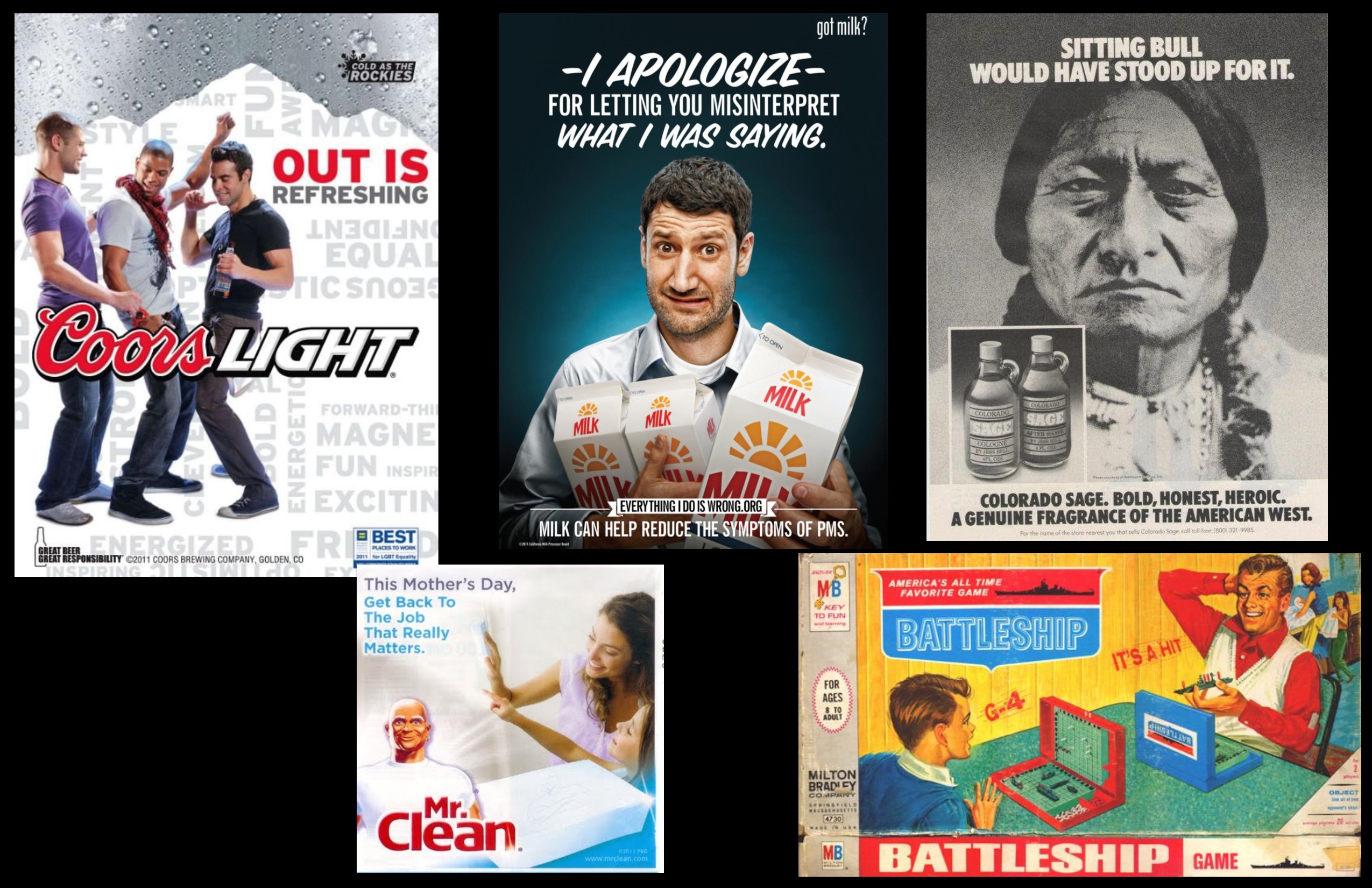Assignment 4.4: Pitch for Change Campaign
| Site: | Cowichan Valley School District - Moodle |
| Course: | English 11, CVOLC, Online, 21-22 |
| Book: | Assignment 4.4: Pitch for Change Campaign |
| Printed by: | Guest user |
| Date: | Thursday, 18 December 2025, 7:15 AM |
1. Learning Targets
|
Learning Target(s):
|
2. Advertising Responsibly
Each advertisement has its own objective and audience and, in general, they fall into three categories.
1. Informative (tell you about a product)
2. Persuasive (convince you to use a product)
3. Reminder (keep a product in your thoughts).
Companies use a variety of techniques to share their ideas, and recent studies have shown that advertising is responsible for self-esteem issues, objectification of women, stereotyping of gender roles, the LGBTQ2+ community, and obesity in children.
This assignment will look at stereotyping, discrimination and teen-targeted advertisement; you will have an opportunity to create your own anti-discrimination ad.
3. Stereotyping and the Target Audience

Looking closely at each ad, reflect on the questions below.
1. Who is the target audience of the campaign?
2. How is discrimination or stereotyping used to push the campaign?
3. What is the underlying message of each ad?
The video below "The Merchants of Cool" is about the impact and effectiveness of advertising.
*WARNING* There is some explicit language in this documentary. Watch with care.
Brainstorm ideas on the ads that impact you. Which ones make you laugh or feel an emotion? Which jingles get stuck in your head? Why?
Consider how this could be targeted directly to you as a young consumer.
4. Economical Editing in Advertising
Word choices in advertising are critical. Modifiers and Author Voice are two important editing practices to learn.
A modifier is a word or group of words that describes another word
- Modifiers should be placed as closely as possible to the word(s) they modify to avoid confusion.
- The word "only" is the most commonly misplaced modifier in written English because it is so often placed carelessly in speech.
- A dangling modifier is connected loosely or not at all to the word(s) it should refer to. As a result, it may seem to explain the wrong thing. Dangling modifiers cannot be corrected simply by moving them to another spot; part of the sentence must be rewritten to make the correction.
Avoid trying to strengthen a word that is already strong (Intensifiers such as very, highly, extremely add nothing to words such as these: crucial, definite, fascinating, horrible, impossible, intriguing, perfect, tragic, unique, wonderful.
Active voice is when the subject of a sentence performs the verb's actions.
Sentences in the active voice have a strong, direct, and clear tone. Here are some short and straightforward examples of active voice.
- Monkeys adore bananas.
- The cashier counted the money.
- The dog chased the squirrel.
Maintain an active voice in your writing which is concise and strong rather than wordy and weak.
Passive voice, on the other hand, is when the subject is acted on by the verb. Here are some short and straightforward examples of passive voice.
- Bananas are adored by monkeys.
- The money was counted by the cashier.
- The squirrel was chased by the dog.
Can you hear the difference?
Source: Grammarly.com
5. ASSIGNMENT 4.4
Go to "4.4 Pitch for Change" Assignment on the main page of the course to complete this section.